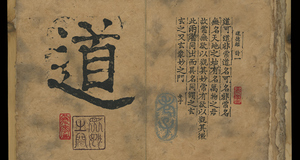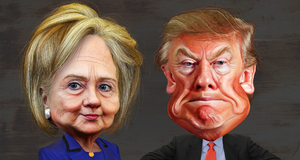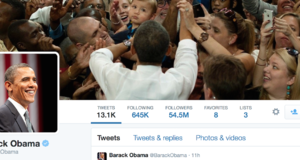After the Storm:Chris Christie's Use of Hurricane Sandy in New Jersey's Gubernatorial ElectionsDiscussionThe findings from this study questioned the validity of Graham, Haidt, and Nosek’s Moral Foundations Theory. The Moral Foundations Theory argued that liberals emphasize the harm v. care and fairness v. reciprocity dichotomies, while conservatives equally focus on all five, including ingroup v. outgroup, authority v. respect, and purity v. sanctity. In 2009, the Christie campaign generally reflected Moral Foundations Theory. His speeches followed the model accurately, with forty percent of speeches coded for each foundation. In particular, the television advertisements uniquely emphasized Christie’s role as a U.S. Attorney in cleaning up government corruption, which is a form of the purity v. sanctity dichotomy. Therefore, Christie’s rhetorical appeals in 2009 were consistent with a conservative platform. The 2013 results suggested Christie’s shifted approach in leadership and violation of Moral Foundations Theory. Chris Christie’s second gubernatorial campaign’s television advertisements overwhelmingly demonstrated Christie’s stressed appeals to harm v. care and fairness v. reciprocity instead of equally distributing appeals to each of the dichotomies. This shift shows that Christie is increasingly adopting liberal moral foundations, which proves his self-reported bipartisanship. For example, one of Christie’s ads, entitled “Compassion,” discusses New Jersey’s prison system. Christie remarks that drugs can ruin lives, but also explains, “no life is disposable.”23His plan of sending drug offenders to rehabilitation services instead of jail time represents bipartisan ideals. These statements reflected Christie’s humanitarianism and value of life, which relate back to the harm v. care dichotomy. The television advertisements and in particular, Christie’s speeches, additionally emphasize fairness v. reciprocity. Christie’s teacher tenure reforms and increased funding to public schools confirmed that he strongly supported equal opportunity.24 In one 2012 speech, “Put People Ahead of the Party,” Christie explained that every citizen deserves to hear partisan arguments publicly, in order to develop his or her own opinions. However, he declared, “It’s got to stop when we need to get things done.”25 Christie expanded the definition of “fairness,” showing that he and other state leaders must give back and fulfill their executive duty for New Jerseyans. This pattern in his speeches showed a departure from the Catalyzer, “whistleblower” role and reiterated that Christie is not a government obstructionist. Christie’s default leadership style, an Edgy Catalyzer, may have influenced this campaign decision. While efficient, Edgy Catalyzers are not preferred leaders. Cameron and Green found that even individuals who identified as Edgy Catalyzer in their natural, default roles were less inclined to favor their own leadership style. Ten percent of Edgy Catalyzers surveyed that their model was the most attractive, the lowest percentage out of the five roles. This statistic is a sharp contrast to fifty-six percent of Visionary Motivators finding Visionary Motivators as the most preferred leadership style.26 This strongly indicated that either Edgy Catalyzers have an established belief of what a leader should be and find their style is undesirable or realize the importance of and admire other leadership models. As U.S. Attorney, Christie was known as a hard-hitting, determined leader who fought corruption and fraud. These results shows that campaign strategists wanted to show Christie’s differences, yet saw a need to earn the Republican Party’s respect. Also, they did not want to turn off voters through Christie’s gruff image as a U.S. Attorney. Christie demonstrated resoluteness and gained esteem in his work with political lawbreakers, but the campaign needed to show him as a leader for all New Jerseyans. This reasoning possibly explains why the 2009 Christie campaign worked within the party platform and avoided taking risks when developing television advertisements and speeches. Cumulatively, only four percent of participants found the Edgy Catalyzer style most attractive. New Jersey’s circumstances, however, favored Christie’s default leadership style. Edgy Catalyzers were rated most effective when improving management and tightening compliance. Christie acted as an Edgy Catalyzer in order to draw attention to the fact that New Jersey was failing from social, economic, and political positions and without guidance, the state and its citizens would be direly affected. Screenshots from his television advertisements showed stiff posture, a roving eye, and direct eye contact.27 This body language matches that of an Edgy Catalyzer. Like Cameron and Green address, Edgy Catalyzers are effective in situations in which rapid change is necessary and traditions are getting in the way. In 2009, Christie took advantage of his natural leadership style and structured his rhetoric and campaign accordingly. Hurricane Sandy, which occurred between the two campaigns, created an unusual political circumstance and as a result, provides an exception to Moral Foundations Theory. The superstorm, which severely damaged parts of New Jersey, was a catalyst for Christie to appeal to the harm v. cares moral foundation. Hurricane Sandy allowed Christie, like White in 1968 28, to unite his community under a noncontroversial, nonpartisan event. Christie used the hurricane as a springboard to energize voters and discuss the importance of listening and working with local officials. This shift in strategy can be further seen through Christie’s body language. He smiles more, seems to always be moving, and is quite expressive. Television advertisements illustrate Christie hugging fellow New Jerseyans, patting them on the back, or even affectionately tussling his son’s hair. Christie’s increased expression of physical contact shows both his familiarity and warmth. Cameron and Green characterize this posture and outer presentation as a traditional Visionary Motivator.29 Hurricane Sandy gave Christie both the publicity and in turn, confidence to distinguish himself from the Republican Party. His appeals to harm v. care show a stronger dissent from conservative ideology. It is possible that Christie made deliberate attempts to appease moderates in preparation for a future presidential nomination. By showing his genuine care about his state and citizens, Christie continued to gain respect and support. Christie’s dramatic shift to the Visionary Motivator leadership model further suggests that his campaign is thinking long-term. Forty-seven percent of participants found the Visionary Motivator style to be the best leadership style in terms of both efficiency and popularity.30 As the most popular leadership style, it is natural that the Christie campaign encouraged Christie to adopt this model in 2013. It should be noted again that while each leader has a default style, each leader can exhibit attributes from the other categories. Christie is still an Edgy Catalyzer; Hurricane Sandy has softened his approach and helped him express the harm v. care dichotomy, in addition to the Visionary Motivator model. Harm v. care appears to be a central characteristic of being a Visionary Motivator. A Visionary Motivator needs to understand and relate with individuals’ concerns before encouraging and inspiring them. In order to influence, one must be caring and approachable first. In addition, Christie adopted many strategic tactics of a Visionary Motivator in his 2013 campaign, such as having dinner with people, speaking in large groups, and spending time with colleagues, such as other New Jerseyan politicians. His is shaping his leadership style based on New Jersey’s current situation. From Sandy, there is still a need for transition, risk-taking, and improved morale. Participants ranked the Visionary Motivator model highest (55%) for situations involving “Cultural Change” and fifty-three percent for “Growing a New Enterprise.” 31 Under a Visionary Motivator model, Christie has articulated a compelling long-term view for New Jersey when further explaining the importance of a great public school system and continued economic growth. The permanence of his niceness is questionable, but Hurricane Sandy provided Christie the opportunity to portray himself as a Visionary Motivator. "Bridgegate"On January 8th, 2014, such inconsistencies in Christie’s political rhetoric and leadership styles were exposed.32 Documents revealed that Christie’s Deputy Chief of Staff Bridget Anne Kelly pressed for lane closures on New Jersey’s George Washington Bridge. The stages of Christie’s personal reactions have been repeatedly described as sarcastic, contrite, and later, outrage.33 At first, Christie joked that he was a construction worker on the road. Later, on a local radio show, Christie denied knowledge of the traffic jams saying, “Did I authorize it? Did I know about it? Did I approve it? Did I have any knowledge of it beforehand? The answer is still the same, it’s unequivocally no.”34 The Port Authority official who authorized the closures, David Wildstein, argues that Christie had prior knowledge of the September 2013 incident. Wildstein’s lawyer wrote to the New York Times, claiming “evidence exists” that contradicts Christie’s public response from press conferences and interviews.35 The motive behind “Bridgegate” is unclear; one theory is that Christie and his staffers sought retribution against local officials such as Fort Lee Mayor Mark Sokolich, who did not endorse Christie in his 2013 gubernatorial candidacy.36 A ten-week probe conducted by the Christie administration vindicated the governor and supported his earlier reports.37 The office that Christie once held, the US Attorney of New Jersey, is further examining the matter, along with the NJ legislature and Port Authority of New York and New Jersey. Whether Christie was a ringleader or bystander, he is still an extension of his administration and its leadership. Claiming lack of knowledge, especially for a confrontational, inquiring Edgy Catalyser, is unusual. Christie did try to initially appeal to a harm v. care moral foundation as well. In statements, Christie said that he was both “outraged and deeply saddened,” agreeing with constituents that Kelly and Wildstein’s conduct was inappropriate.38 Yet Bridgegate puts a chink in the governor’s earlier campaign claims to demonstrate bipartisanship and unity. The media coverage is portraying and pushing Christie, whether he likes it or not, back into an Edgy Catalyser leadership style with deemphasized harm v. care moral foundations. In responding to attacks on his administration and a damaged reputation, Christie defaults to an aggressive, robust troubleshooter, which as aforementioned, is statistically the most unpopular, difficult leadership style for others to readily follow. The deemphasized harm v. care moral foundation can be seen in New Jerseyans’ response to the investigation’s findings. The report was quickly dismissed as “whitewash,” with, in one survey, 56 percent of New Jerseyans doubting the investigation’s legitimacy.39 Few authorities, if any, outside of Christie’s inner circle have defended him and his marred reputation. Adopting an encouraging, supportive Visionary Motivator role would be a poor rhetorical choice. Christie is in a challenging position, especially considering his potential presidential aspirations in 2016. The Bridgegate scandal further demonstrates that the sharpest politicians, whether consciously or not, oscillate between varying moral foundations and leadership styles. They understand that ever-changing circumstances in the political sphere call for different means of engaging and maintaining their constituents. However, it should be noted that neither Cameron and Green nor Haidt explicitly discuss one’s recovery from political scandal and media scrutiny. Bridgegate reflects both an individual politician’s response to an obstacle in his agenda and the need for an ongoing research process.Continued on Next Page » Suggested Reading from Inquiries Journal
Inquiries Journal provides undergraduate and graduate students around the world a platform for the wide dissemination of academic work over a range of core disciplines. Representing the work of students from hundreds of institutions around the globe, Inquiries Journal's large database of academic articles is completely free. Learn more | Blog | Submit Latest in Business & Communications |


















